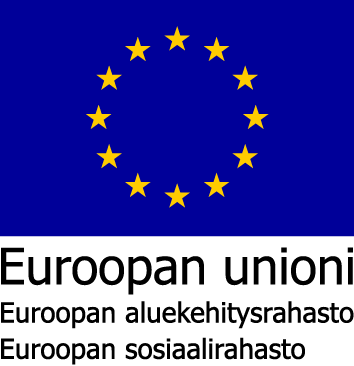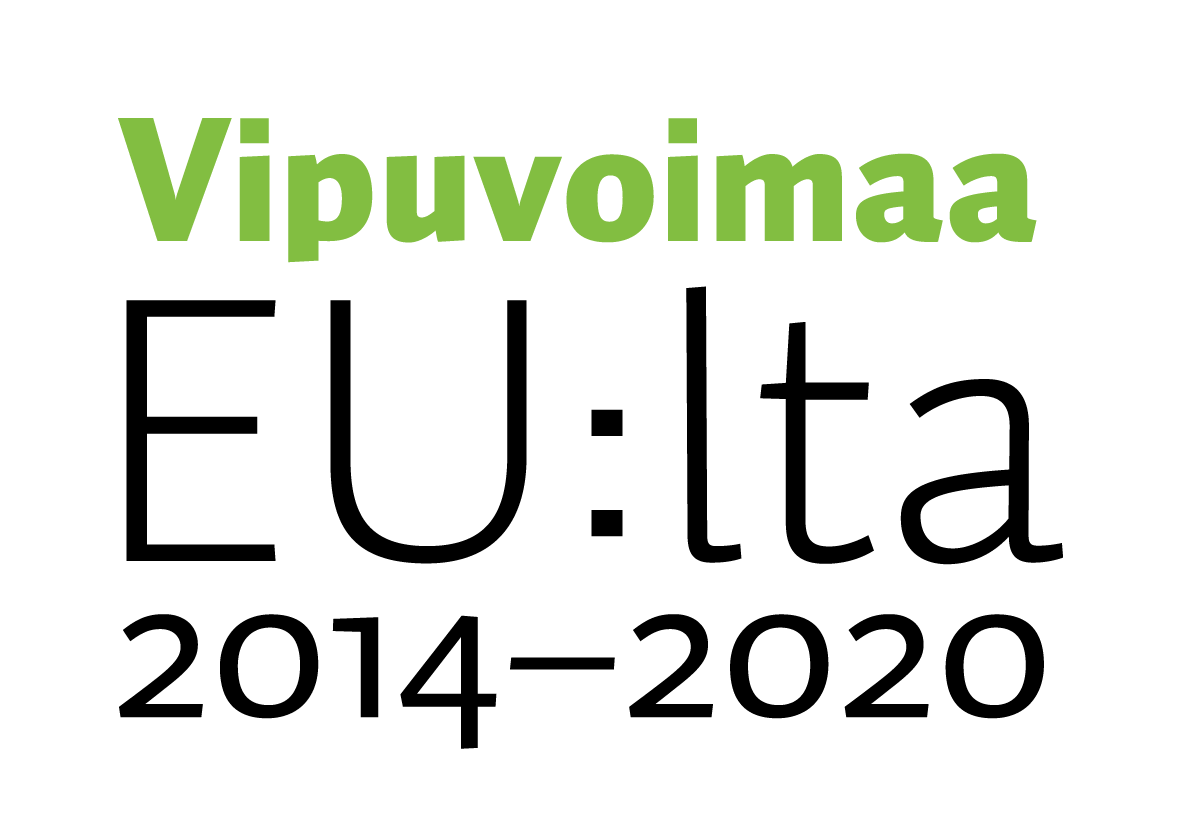

 |
 |
Hankekoodi: A76154
Hankkeen nimi: Hyvinvointialan kumppanuuksilla vaikuttaviin palveluihin
Toimintalinja: 2. Uusimman tiedon ja osaamisen tuottaminen ja hyödyntäminen
Erityistavoite: 4.1. Tutkimus-, osaamis- ja innovaatiokeskittymien kehittäminen alueellisten vahvuuksien pohjalta
Suunnitelman mukainen toteutusaika: Alkaa 1.9.2020 ja päättyy 28.2.2023
Toiminnan tila: Toiminta päättynyt
Vastuuviranomainen: Pohjois-Karjalan maakuntaliitto
Hakijan virallinen nimi: Karelia Ammattikorkeakoulu Oy
Organisaatiotyyppi: Ammattikorkeakoulu
Y-tunnus: 2454377-1
Jakeluosoite: Tikkarinne 9
Puhelinnumero: 013260600
Postinumero: 80200
Postitoimipaikka: Joensuu
WWW-osoite: https://vapahanke.karelia.fi/
Hankkeen yhteyshenkilön nimi: Anne Ilvonen
Yhteyshenkilön asema hakijaorganisaatiossa: Tutkimus- ja kehittämisjohtaja
Yhteyshenkilön sähköpostisoite: anne.ilvonen(at)karelia.fi
Yhteyshenkilön puhelinnumero: +358503116314
Hakijoiden lukumäärä tai tuen siirto -menettely:
Suomessakin eletään poikkeuksellisissa olosuhteissa korona-pandemian myötä. Kaikkia todellisia vaikutuksia elinkeinoelämään tai yksityisiin palveluntuottajiin ei voida ennakoida eikä ennustaa. Hankkeen valmistelu on tehty oletuksella akuuttitilanteen normalisoitumisesta viimeistään syksyllä 2020. Tällöin palveluntuottajat pystynevät keskittymään kehittämistoimiin. Toimenpiteillä voidaan tukea myös kriisiytymisuhan alla olevia palveluntuottajia toimintansa uudistamisessa.
Hyvinvointialan arvoverkot Pohjois-Karjalassa hankkeessa 2019 kartoitettiin hyvinvointialan arvoverkot Pohjois-Karjalassa ja Heinävedellä. Korkeakoulun ja kehitysyhtiön yhteistyö koettiin toimivaksi ja tulokselliseksi toimintatavaksi.
Tämän hankkeen tavoitteet ovat täsmentyneet edeltävän hankkeen pohjalta. Kehittämistarpeet ovat nousseet pohjoiskarjalaisilta sotehy-alan palveluntuottajilta sidosryhmineen, toimialaraporteista, Sitran megatrendeistä sekä pienyrittäjyystutkimuksista. Maakunnallinen hyvinvointistrategia on huomioitu hankkeen suunnittelussa. Hankkeeseen osallistetaan sotehy-alan palveluntuottajien lisäksi ICT-, ravitsemispalvelu- ja kuljetusalan toimijoita. Hankkeen toteuttamisessa hyödynnetään opettaja ja opiskelija verkostoja asiantuntijoiden lisäksi.
Pohjois-Karjalan maakunnan pysymiseksi elinvoimaisena tulee sotehy-toimialaa kehittää kokonaisvaltaisesti ja pitkäjänteisesti. Vaikuttavuuden saavuttamiseksi tulee: 1.Lisätä moninaisia ja pysyväluonteisia kumppanuuksia ja verkostoja/arvoverkkoja. 2.Kehittää tulevaisuuden palveluja ja palveluprosesseja asiakaskeskeisesti ja monitoimijaisesti. 3.Lisätä teknologian ja digitalisaation hyödyntämistä liiketoiminnassa. 4.Kehittää johtamisosaamista strategiaan perustuen koskien mm. muutos- ja henkilöstöjohtajuutta ja digitaalisuuden johtamista.
Tavoitteena on 1.Lisätä sotehy-alan yksityisten palveluntuottajien mahdollisuuksia hyödyntää ennakointitietoa ja sen hyödyntämistä oman liiketoiminnan ja palvelujen kehittämisessä. 2.Luoda uusia kumppanuuksia sotehy-alan palveluntuottajien liiketoiminnan kehittämiseen hyödyntäen teknologisia ratkaisuja ja digitaalisuutta. 3.Lisätä tietoa ja valmiutta tulevaisuuden liiketoiminnan johtamiseen. 4.Luoda valmiuksia kehittää uutta ja uudenlaista liiketoimintaa hyvinvointialalle. 5.Tukea vaikuttavien hyvinvointialan ekosysteemien jatkuvaa kehittämistyötä.
Hankkeessa järjestetään verkostoitumiseen ja liiketoiminnan kehittämiseen monitoimijaisia tilaisuuksia ja työpajoja sekä toteutetaan uusien palvelujen ja palveluprosessien kokeiluja. Benchmarking- ja/tai messumatkoja toteutetaan kaksi kotimaahan ja yksi ulkomaille – kohteet valikoituvat osallistujien tarpeiden perusteella.
Hankkeella tavoitellaan syntyvän uutta yritys- ja liiketoimintaa sekä verkostoja, joissa hyödynnetään nykyteknologiaa. Pitkällä aikavälillä on tuettu maakunnallisen hyvinvointialan ekosysteemin vahvistumista ja kehittämistä.
Pohjois-Karjalan alueen, mukaan lukien Heinävesi Sotehy-alan markkinaehtoisten palvelujen tuottajat (mikro- ja pk-yritykset sekä järjestöt) sekä ko. toimialoille liiketoimintaa suunnittelevat tahot / henkilöt. Tilastokeskuksen toimialaluokituksen TOL 2008 mukaisesti pääkohderyhmänä ovat luokat 86 Terveyspalvelut, 87 Sosiaalihuollon laitospalvelut, 88 Sosiaalihuollon avopalvelut, 90 kulttuuri- ja viihdetoiminta, 93 Urheilutoiminta sekä huvi- ja virkistystoiminta. Lisäksi ko. alojen palvelutarjontaan kiinteästi liittyvät yksityiset palveluntarjoajat ICT-, kuljetus- ja ravitsemispalvelualoilta.
Välillisinä kohderyhminä pääkohderyhmän liiketoimintakumppanit, sidosryhmät ja asiakkaat, alaan liittyvät oppilaitokset henkilökuntineen ja opiskelijoineen, koulutus-, kehittämis- ja tutkimusorganisaatiot. Pohjois-Karjalan toimijoista erityisesti Siun sote, HYTE-toimijat kunnissa, ISLO, Pohjois-Karjalan Yrittäjät ry, Pohjois-Karjalan järjestöasiain neuvottelukunta JANE, Itä-Suomen Sosiaalialan Osaamiskeskus ry.
Myönnetty EU- ja valtion rahoitus: 451 283
Toteutunut EU- ja valtion rahoitus: 363 149
Suunniteltu julkinen rahoitus yhteensä: 534 525
Toteutunut julkinen rahoitus yhteensä: 436 414
Maakunnat: Pohjois-Karjala
Seutukunnat: Keski-Karjalan, Joensuun, Pielisen Karjalan
Kunnat: Kontiolahti, Outokumpu, Tohmajärvi, Nurmes, Liperi, Polvijärvi, Lieksa, Joensuu, Rääkkylä, Heinävesi, Ilomantsi, Kitee, Juuka
Jakeluosoite:
Postinumero:
Postitoimipaikka:
Suunniteltu: 15, joihin työllistyvät naiset 10
Toteutunut seurantatietojen mukaan: 0.00, joihin työllistyvät naiset 0.00
Suunniteltu: 0, joista naisten perustamia 0
Toteutunut seurantatietojen mukaan: 0.00, joista naisten perustamia 0.00
| Välitön | Välillinen | |
| Ekologinen kestävyys | ||
| Luonnonvarojen käytön kestävyys | 0 | 0 |
| Ei ole hankkeen keskeinen tavoite | ||
| Ilmastonmuutoksen aiheuttamien riskien vähentäminen | 0 | 0 |
| Ei ole hankkeen keskeinen tavoite | ||
| Kasvillisuus, eliöt ja luonnon monimuotoisuus | 0 | 0 |
| Ei ole hankkeen keskeinen tavoite | ||
| Pinta- ja pohjavedet, maaperä sekä ilma (ja kasvihuonekaasujen väheneminen) | 0 | 0 |
| Ei ole hankkeen keskeinen tavoite | ||
| Natura 2000 -ohjelman kohteet | 0 | 0 |
| Ei ole hankkeen keskeinen tavoite | ||
| Taloudellinen kestävyys | ||
| Materiaalit ja jätteet | 0 | 0 |
| Ei ole hankkeen keskeinen tavoite | ||
| Uusiutuvien energialähteiden käyttö | 0 | 0 |
| Ei ole hankkeen keskeinen tavoite | ||
| Paikallisen elinkeinorakenteen kestävä kehittäminen | 6 | 5 |
| PK-yrittäjyys lisää paikallista elinvoimaa ja lisää kestävää kehitystä. | ||
| Aineettomien tuotteiden ja palvelujen kehittäminen | 5 | 5 |
| Kyseessä on palveluiden kehittämishanke. | ||
| Liikkuminen ja logistiikka | 4 | 4 |
| Hyvinvointiyrittäjyyteen liittyvät liikkuvat palvelut ovat esimerkki kehittämistoimenpiteistä. | ||
| Sosiaalinen ja kulttuurinen kestävyys sekä yhdenvertaisuus | ||
| Hyvinvoinnin edistäminen | 8 | 8 |
| Hankkeen keskeinen tavoite | ||
| Tasa-arvon edistäminen | 3 | 3 |
| Tuetaan hyvinvointiyrittäjyyden tunnistamista erityisesti nuorten miesten keskuudessa. | ||
| Yhteiskunnallinen ja kulttuurinen yhdenvertaisuus | 6 | 7 |
| Toimivilla hyvinvointipalveluilla on yhteiskunnan koheesioon merkittävä vaikutus. | ||
| Kulttuuriympäristö | 3 | 5 |
| Hyvinvointialan palveluntuottajat toimivat vahvasti myös liikuntakulttuurin alalla. Palveluntuottajilla on vaikutusta liikuntakulttuurin kehittämisessä. | ||
| Ympäristöosaaminen | 0 | 0 |
| Ei ole hankkeen keskeinen tavoite | ||
Hankesuunnitelmassa hankkeen toiminnoille määritettiin viisi tavoitetta. Ensimmäisenä tavoitteena oli lisätä sotehy-alan yksityisten palveluntuottajien mahdollisuuksia hyödyntää ennakointitietoa oman liiketoiminnan ja palvelujen kehittämiseen. Hankkeen aikana palveluntuottajille järjestettiin tilaisuuksia, joissa toimiala- ja toimintaympäristötietoa sekä tulevaisuus- ja ennakointitietoa jaettiin koskien niin valtakunnallista kuin alueellista tilannetta. Tilaisuudet käsittelivät hyvinvointialueiden muodostumista valtakunnallisesti ja Siun soten hyvinvointialueen muodostumista alueellisesta näkökulmasta. Tilaisuuksissa esiteltiin myös alueella tapahtuvia kunta- ja väestörakenteen muutoksia. Tilaisuuksissa ohjattiin palveluntuottajia analysoimaan toiminnasta kertyvää dataa ja sen hyödyntämistä päätöksenteon pohjana. Tilaisuuksia järjestettiin myös hyvinvointialan megatrendeistä ja hiljaisista signaaleista kehittämistyön tueksi. Tietoa annettiin myös pohjoiskarjalaisten asiakkaiden hyvinvointipalvelujen tarpeista ja mahdollisuuksista uudistaa toimintoja digitaalisia ratkaisuja hyödyntäen. Tilaisuuksia tähän tavoitteeseen järjestettiin seitsemän ja osallistujia tilaisuuksissa oli 163. Hankkeessa tavoiteltiin 25 uutta tuotetta, palvelua tai palvelupolkua. Hankkeen aikana saatiin 22 uutta tuotetta / palvelua.
Toisena tavoitteena oli luoda uusia kumppanuuksia sotehy-alan palveluntuottajien liiketoiminnan kehittämiseen hyödyntäen teknologisia ratkaisuja ja digitaalisuutta. Hyvinvointialan palveluntuottajille järjestettiin verkostoitumistilaisuuksia, joissa rakennettiin kumppanuuksia ja kehitettiin verkostoyhteistyötä sekä siihen liittyvää osaamista. Verkostoitumistilaisuuksia järjestettiin enemmän kuin hankesuunnitelmassa luvattiin (kaikkiaan viisi tilaisuutta), koska epidemian vuoksi verkostoituminen koettiin haasteelliseksi toimittaessa etäyhteyksin. Verkostoitumisen tueksi luotiin malli, jonka avulla verkostot voivat työskennellä ja kehittää verkostoa. Verkostoitumisen välineinä käytettiin erilaisia digitaaliaisa ratkaisuja, kuten Teams, WhatsApp, Howspace ja Zoom kumppanuusyhteistyöhön. Epidemian vuoksi verkostoyhteistyöhön ei saatu mukaan hyvinvointialan ulkopuolisia palveluntarjoajia (esim. kuljetus- ja ravitsemuspalvelut). Hanke järjesti lukusia tilaisuuksia, joissa digipalveluja tuottavat yritykset esittelivät tuotteitaan/palvelujaan sekä mahdollisuuksia kumppanuuksiin, joissa hyödynnetään digitalisaatiota hyvinvointialan yritystoiminnan kehittämiseen. Kupanuusverkostoa Siun soten kanssa, eri palveluntuottajasektoreille, rakennettiin koko hankekauden ajan. Aikaan saatiin kaski pysyväisluonteista verkostoa kansallisesti ja yksi kansainvälinen verkosto yhdelle palveluntuottajalle. Tilaisuuksia järjestettiin 10 ja osallistujia tilaisuuksissa 210. Tavoitteena oli luoda 10 uutta verostoa, joista yhdeksän verkoston toiminta saatiin käynnistettyä.
Kolmantena tavoitteena oli lisätä tietoa ja valmiutta tulevaisuuden liiketoiminnan johtamiseen. Tilaisuuksia järjestettiin yrityksen strategian kirkastamiseksi, muutos-, henkilöstöjohtajuuden ja digitaalisuuden johtamisen tueksi. Strategiatyö on palveluntuottajille haasteellista. Palveluntuottajat ovat tottuneet toimimaan ”kädet savessa”, ja yrityksen pitkän tähtäimen kehittäminen ja suunnittelu on jäänyt taka-alalle. Strategiatyön käynnistämiskesi järjestettiin kaksi tilaisuutta. Nykyisessä tilanteessa yrittäjät tunnistavat strategiatyön yrityksen kehittämiskohteeksi. SoTeHy henkilöstön saatavuus on haasteellista, joten tarvitaan henkilöstö- ja muutosjohtamista. Tunteiden johtamiseen, työhyvinvointiin ja työn sujuvuuden parantamiseen (Lean) järjestettiin tilaisuuksia, joiden toivottiin avaavan yrittäjien näkemyksiä tulevaisuuden johtamiseen. Teknologisia ja digitaalisia kokeiluja järjestettiin lähes koko hankekauden ajan digitaalisuuden johtamisen tueksi. Kokeiluja toteutettiin runsaasti ja kaikilla kokeiluihin osallistuneilla yrityksillä on prosessikuvaus kokeilujen läpiviemiseen jatkossa. Kokeiluihin osallistettiin kaikki yrityksen työntekijät. Hankkeessa oli tavoitteena toteuttaa 20 kokeilua, mutta niitä toteutettiin 24. Tilaisuuksia johtamiseen järjestettiin 9, joissa osallistujia oli 144.
Neljäntenä tavoitteena oli luoda valmiuksia kehittää uutta ja uudenlaista liiketoimintaa hyvinvointialalle. Epidemia toi vaateen kehittää tulevaisuuden palveluja ja palveluprosesseja asiakaskeskeisesti ja monitoimijaisesti. Järjestetyissä tilaisuuksissa palveluntuottajat totesivat, että uusilla hyvinvointialueilla liiketoimintaosaamisen kehittämistä ja kilpailukyvyn vahvistamista on tehtävä. Epidemian ansiosta uudet teknologiat ja digitaalisuus muuttivat asiakaskunnan roolia ja käyttäytymistä. Etäpalvelut, -terapiat ja -ohjaus yleistyivät ja palveluntuottajat joutuivat kehittämään uudella tavalla toteutettua palvelutuotantoa. Omien uusien markkinoiden löytäminen ja markkinaosuuden saavuttaminen strategialähtöisesti muodostuvat yritysten elinehdoksi. Uusien markkinoiden näkökulmasta hankkeessa järjestettiin neljä benchmarkingmatkaa ja erilaisia teknologiaan tai digitaalisuuteen liittyvää kokeilua. Palveluntuottajat totesivatkin, että monitoimijaisuus tulee olemaan kasvava trendi väljästi asutuilla alueilla. Tavoite uusista yrityksistä ja uusista työpaikoista oli haasteellinen koronaepidemian ja hyvinvointialueiden rakentumisen vuoksi. Uusia palveluja lanseerattiin yhdeksän ja palveluja sekä paleluprosesseja saatiin työpajoissa alulle, mutta tilanteen yhteiskunnallinen haasteellisuus teki yritykset varovaisiksi. Hankkeen aikana hankkeessa mukana olleista hyvinvointialan palveluntuottajista neljä lopetti palvelutuotantonsa. Valitettavasti varsinaisia monialaisia palveluja ei päästy kehittämään koronaepidemian aiheuttamien rajoitusten vallitessa. Tavoitteeseen järjestettiin seitsemän tilaisuutta ja osallistujia oli 146. Tavoitteen olleesta 15 uudesta yrityksestä ja 15 uudesta työpaikasta saatiin 4 uutta yritystä ja 10 uutta työpaikkaa.
Hankkeen viidentenä tavoitteena oli tukea vaikuttavien hyvinvointialan ekosysteemien jatkuvaa kehittämistyötä. Yhteistyötä Siun soten kanssa on kehitetty edellisten hankkeiden aikana (Hymy, Hyrrä, Arvoverkkokartoitus). Tätä kehitystyötä jatkettiin Siun soten TulSote -hankkeen kanssa. Hanketapaamisissa, joissa oli mukana myös palveluntuottajia, kuvattiin hyvinvointialueille tulevia muutoksia ja pyrittiin löytämään ratkaisuja yksityisten palveluntuottajien tapaan toimia yhteistyössä julkisen palvelutarjonnan kanssa. Sekä julkisella että yksityisellä palvelutuotannolla on yhteinen tavoite kustannusten nousun hallinta, palvelujen saatavuus sekä parempi asiakaskokemus. Erilaiset etätyövälineet nousivat kaikissa keskusteluissa esille palvelujen kehittämisen näkökulmasta. Tilaisuuksissa edistettiin maakunnallisen hyvinvointiekosysteemin vahvistumista ja yhteistoimintaa tehden toimijaverkkoa näkyväksi sekä luomalla yhteisiä työvälineitä toimijoille. Sopimus- ja konsortio-osaamisen kehittämiseksi järjestetään aiheesta seitsemän (7) asiantuntijatilaisuutta, jotka liittyivät sopimuksiin sekä tilanteeseen siirryttäessä Siun sotesta hyvinvointialueisiin. Hankkeeseen osallistujia ohjattiin hakemaan neuvonta- ja asiantuntija-apua Business Joensuulta, kehittämisyhtiöiden neuvontapalveluista, Suomen Yrittäjät ry:ltä ja toimialajärjestöjen lakiasiainpalveluista (Kuntoutusyrittäjät). Palveluntuottajille järjestettiin erillinen tilaisuus hankinnoista ja hakuvahtipalvelusta. Kaikkiaan tilaisuuksia järjestettiin kahdeksan ja osallistujia tilaisuuksissa oli 98.